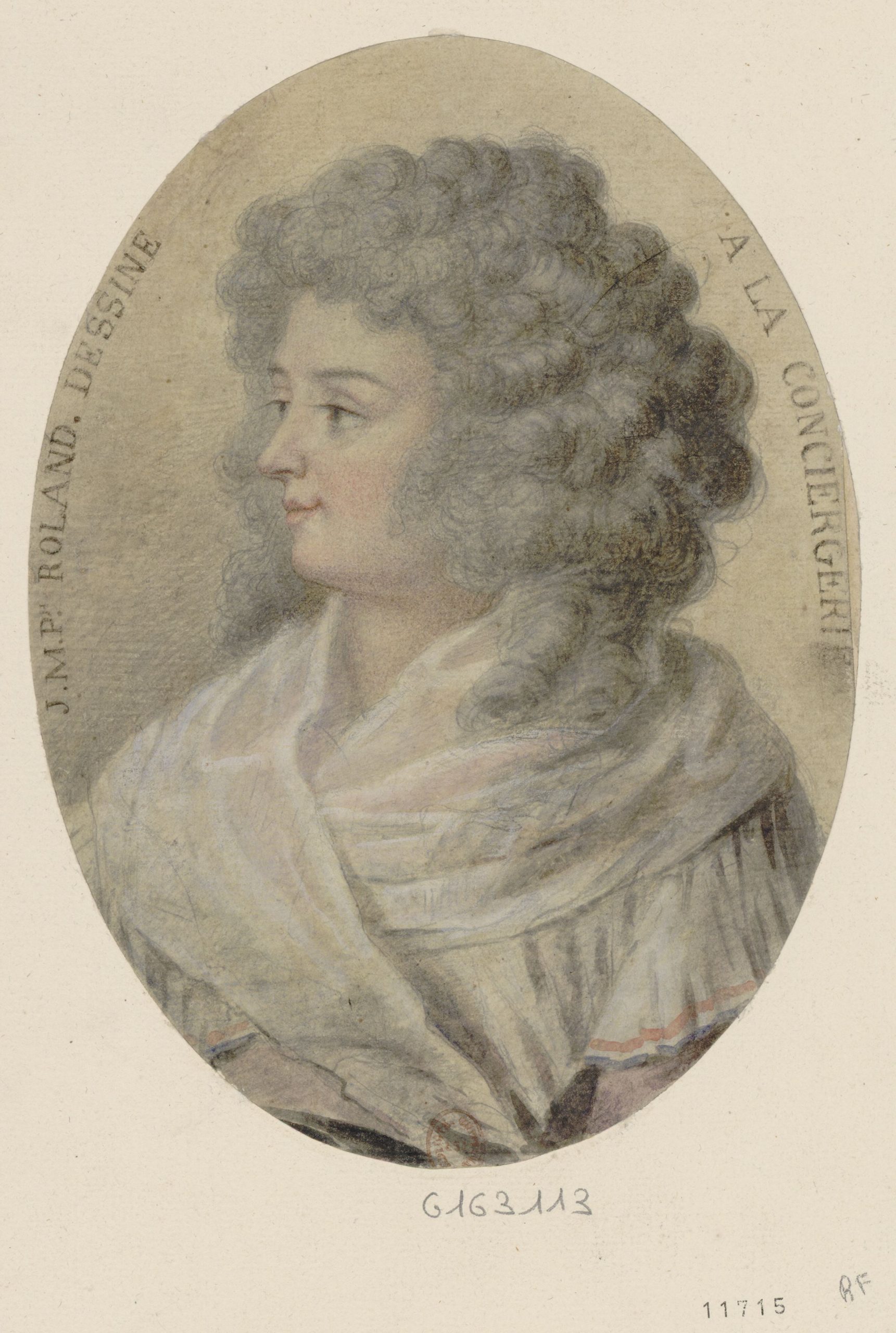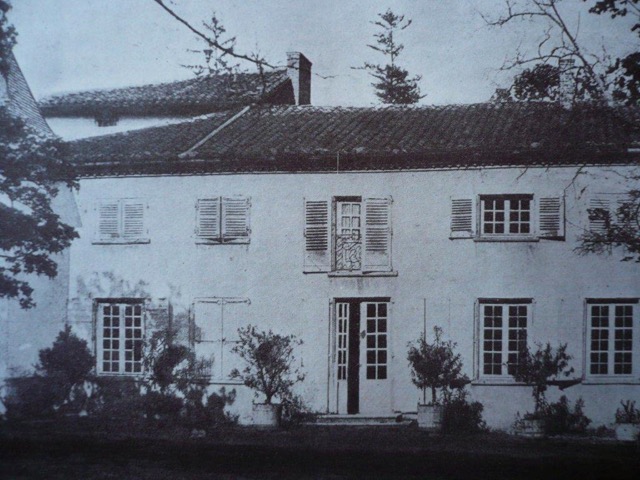by Professor Siân Reynolds
Siân Reynolds is former Professor of French at the University of Stirling, and the author of Marriage and Revolution: Monsieur and Madame Roland (0xford University Press, 2012). Her current research is on the children of the revolutionaries. She is also a member of the Advisory Board for this project. She writes:
Eighteenth-century manuscripts come in all kinds of handwriting, spelling and syntax, from the easily readable to the very challenging. If you have looked at the sample posted on this website, you will know that the duchess of Elbeuf’s Letters come towards the challenging end of the spectrum. The transcript being prepared by the Project Team will be a gift for future readers, but even this modern version of the text (we members of the Advisory Board have seen an early draft) will call for some ingenuity in interpreting it.
Prompted by this first glance at the transcript, I wondered what kind of upbringing and education Innocente-Catherine de Rougé received in the early years of the eighteenth century. She was born in Brittany in 1707, in a family with a string of noble connections, and her two marriages made her very rich. But it looks as if her education was haphazard, to say the least. She expresses herself fluently, but on the page it reads phonetically. (Perhaps she was surrounded by Breton-speaking servants in her childhood, about which we know nothing yet.) She certainly did not receive the kind of formal training a boy born into a similar family might have had at that time.
This suggested a comparison with another female witness to the French Revolution, Marie-Jeanne Phlipon, who was the daughter of an engraver from the Île de la Cité in central Paris.

A drawing of Mme Roland in prison before her execution in 1793. Available via Gallica, the digital hub for the Bibliothèque nationale de France
Despite her much lower station in life, the woman later known as Madame Roland was considerably better educated, thanks to help from literate relatives, a brief spell in a convent and self-schooling. Her famous prison memoirs tell a story, retrospectively and with attitude, but we also have her letters recording day-to-day events and opinions. Perhaps surprisingly, there are some points in common between the reactions of these two strong-minded women, of different status, generation, and above all views of the Revolution.
The duchess was appalled, Madame Roland thrilled by the events of July 1789. As chance would have it, both travelled out to their country houses in late July during the ‘Great Fear’ and wrote letters describing their journey in early August. The duchess went in two carriages with six or seven servants to one of her several chateau-centred properties, Moreuil in Picardy, as a refuge from Paris. Mme Roland rode out on horseback to her husband’s family’s fairly modest farm-vineyard, Le Clos, in the Beaujolais to check on it. Both women professed themselves unafraid of attack, as both felt that they were good to their neighbours and/or tenants. The duchess encountered hostile roadblocks but did not panic, and she was finally allowed through to her property by local ‘respectable folk’ and ‘vassals’, who welcomed her as ‘mother to the poor’ (Elbeuf Letters, entry for 8 August 1789). Madame Roland meanwhile wrote from Le Clos to Brissot on 3 August 1789: ‘Everyone urges me to come and stay in town, but [. . .] I don’t have any feudal charts or titles; I do nothing but good for my neighbours. If they were to be ungrateful, well, tant pis [. . .] even if I should be the victim of brigands, I would not lose hope in public affairs, like those cowards who think the sky is falling in, just because a few houses have been burnt down.’

Le Clos, the Roland family farm in the Beaujolais
Both women expressed themselves strongly and repeatedly – from opposing points of view of course – about the first National Assembly and the king. The duchess describes the ‘Estates-General’’ and ‘the Third’ (terms she continues to use) as having ‘no common sense’, arguing and going back and forth over the issue of the constitution (August 1789).[1] ‘Sensible people prefer to leave, rather than boldly challenge these philosophes’ (another term she uses frequently). Madame Roland, who had queued up eagerly to hear the debates as soon as she got to Paris in January 1791, was quickly disillusioned: ‘mediocre and corrupt’, these deputies would ‘never produce anything but nonsense’ (28 April 1791).
As for Louis XVI, the duchess is surprisingly hard on him, from the very beginning of the Revolutionary period onwards: ‘however limited in intelligence he is, he must know the Third wants to eat away his power’ (15 June 1789); ‘he has no resources of spirit’ (28 May 1790); he is ‘incomprehensible’ for not taking firmer action (29 April 1791). Madame Roland meanwhile was largely responsible for her husband’s famous letter to Louis in June 1792, urging him to comply with the Legislative Assembly.[2] The letter lectured Louis: ‘I know that the austere language of truth is rarely welcomed close to the throne. I also know that it is because it is practically never heard there that revolutions become necessary’. And it precipitated the dismissal of the ‘Jacobin’ ministers — the only action by the king that the duchess seems to have approved of, by the way.
Madame Roland wrote on 11 July 1791, ‘We are living ten years in twenty-four hours’, while the duchess noted on 14 March 1793 that ‘another year in these conditions changes us as much as twenty in the course of an ordinary life’. Both these women were shrewd observers of what was going on. Both of them, one senses, were rather frustrated by the actions of the men in power. And as time went on, they might have agreed, either with excitement or with dread, that they were witnessing an age in human history like no other.
[1] Editor’s note: The Estates General met in 1789 for the first time since 1614. At the invitation of the king, deputies were elected from across France to meet at Versailles to help the monarchy solve the country’s parlous financial situation. ‘The Third’ was one of three Estates or Orders into which the French kingdom was divided conceptually: the clergy (First Estate), the nobility (Second) and the Third Estate (everybody else). As soon as the Estates General opened in May 1789 the deputies representing the Third began to make demands for more equitable treatment, which within months had led to agreement that France required a new, written constitution. The famous Declaration of the Rights of Man and the Citizen (26 August 1789) was written as its preamble, although the constitution itself was not completed until 1791 – and only lasted for a year.
[2] Editor’s note: Madame Roland’s husband was a prominent minister at this time. The Rolands were attempting to navigate a complex political situation in what was by then a wartime constitutional monarchy – but a monarchy that was no longer trusted by the many of the revolutionary political class. Roland’s letter concerned ongoing disputes about the exercise of the royal veto in relation to two categories of French citizen widely seen as counter-revolutionary: émigrés, and members of the clergy who had refused to swear allegiance to the revolutionary project. Although they did not know it at the time, Louis XVI would only remain on the throne for another two months.
Credit: The photo of Le Clos is reproduced from Mrs Pope-Hennessy (Una Birch), Madame Roland, a Study in Revolution (London, Nisbet & Co., 1917)
